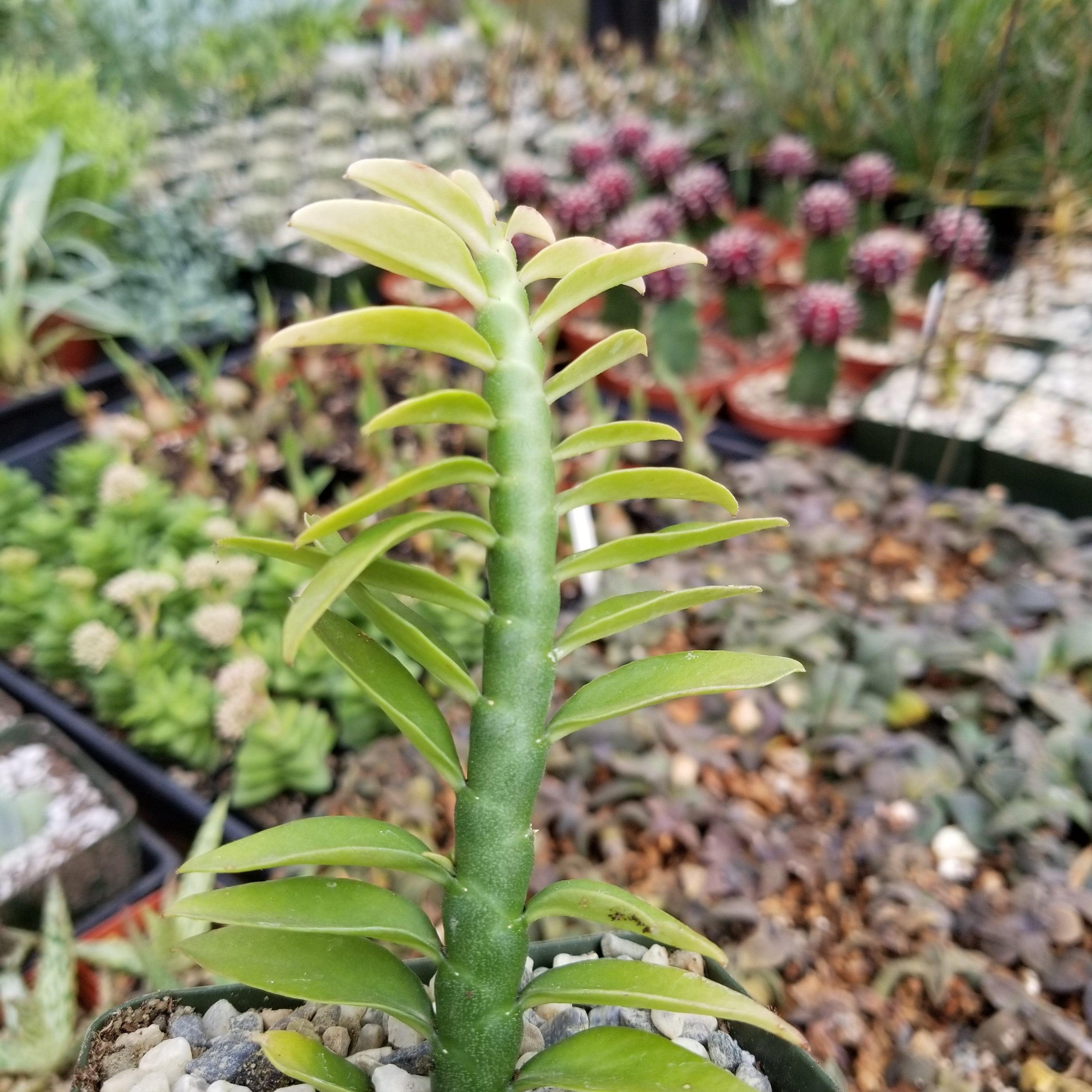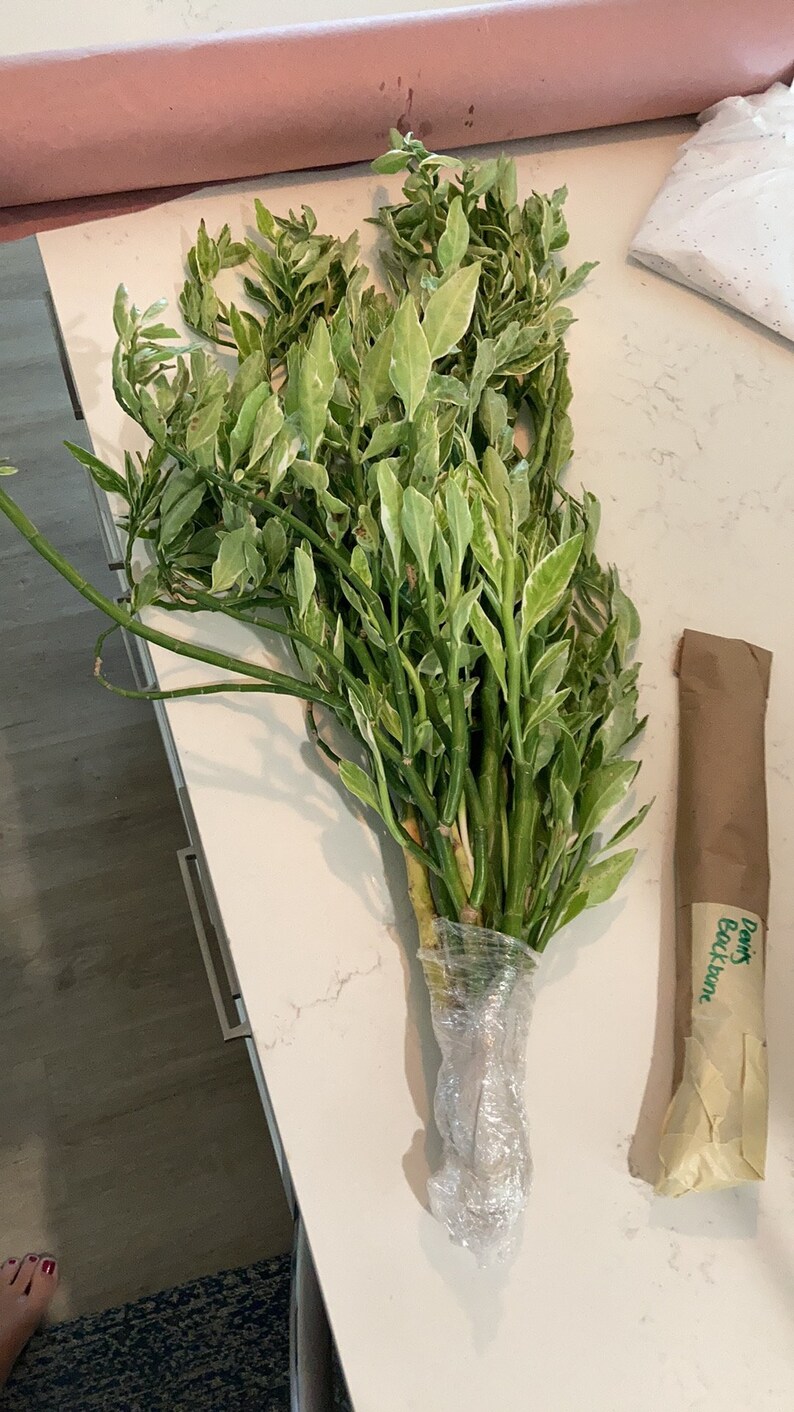
Devils backbone plant full#
Any correct part of a taxon name can be entered and a choice of the correct one made from the small list of resulting matches.įor example, matching the full name exactly in a Scientific Name search for Piptochaetium avenacioides may be difficult, but strings of either tium aven or avenaci or m avenac or pipto will all result in very small lists of matches.

Hint: Correct spelling is necessary for desired results, but because this function is a string search the full name need not be entered. Select the criterion by which you wish to search (Scientific name, Genus, Family, etc.) and enter that information into the provided field. NatureServe does not typically rank hybrid species. GNA - Species for which a rank is not applicable.GH - Historically known, with the expectation that it might be rediscovered.G5 - Demonstrably secure globally, though it may be quite rare in parts of its range, especially at the periphery.G4 - Imperiled globally because of rarity (6 - 20 occurrences, or few remaining acres, or miles of stream) or very vulnerable to extinction throughout its range because of other factors.G3 - Imperiled globally because of rarity (6 - 20 occurrences, or few remaining acres, or miles of stream) or very vulnerable to extinction throughout its range because of other factors.G2 - Imperiled globally because of rarity (6 - 20 occurrences, or few remaining acres, or miles of stream) or very vulnerable to extinction throughout its range because of other factors.G1 - Critically imperiled globally because of extreme rarity (5 or fewer occurrences), or very few remaining acres, or miles of stream) or especially vulnerable to extinction because of some factor of its biology.The global rank reflects the species worldwide rarity. (Definitions from: American Heritage Science Dictionary)Įach species' global rank is determined by NatureServe. The association between the different organisms in a lichen is so close that lichens are routinely referred to as a single organism, and scientists classify lichens using the name of the fungal component. The more familiar lichens grow slowly as crusty patches, but lichens are found in a variety of forms, such as the tall, plantlike reindeer moss. Owing to this partnership, lichens can thrive in harsh environments such as mountaintops and polar regions. These live protected among the dense fungal hyphae and produce carbohydrates for the fungus by photosynthesis. The fungal component of a lichen absorbs water and nutrients from the surroundings and provides a suitable environment for the alga or cyanobacterium.

The mutualistic symbiotic association of a fungus with an alga or a cyanobacterium, or both. In contrast to the vascular plants, the gametophyte (haploid) generation of bryophytes constitutes the larger plant form, while the small sporophyte (diploid) generation grows on or within the gametophyte and depends upon it for nutrition. Bryophytes generally live on land but are mostly found in moist environments, for they have free-swimming sperm that require water for transport. Bryophytes lack the specialized tissues xylem and phloem that circulate water and dissolved nutrients in the vascular plants. Also called tracheophyte.Ī large group of seedless green plants including the mosses, liverworts, and hornworts. The vascular plants include all seed-bearing plants (the gymnosperms and angiosperms) and the pteridophytes (including the ferns, lycophytes, and horsetails). Any of various plants that have the vascular tissues xylem and phloem.


 0 kommentar(er)
0 kommentar(er)
